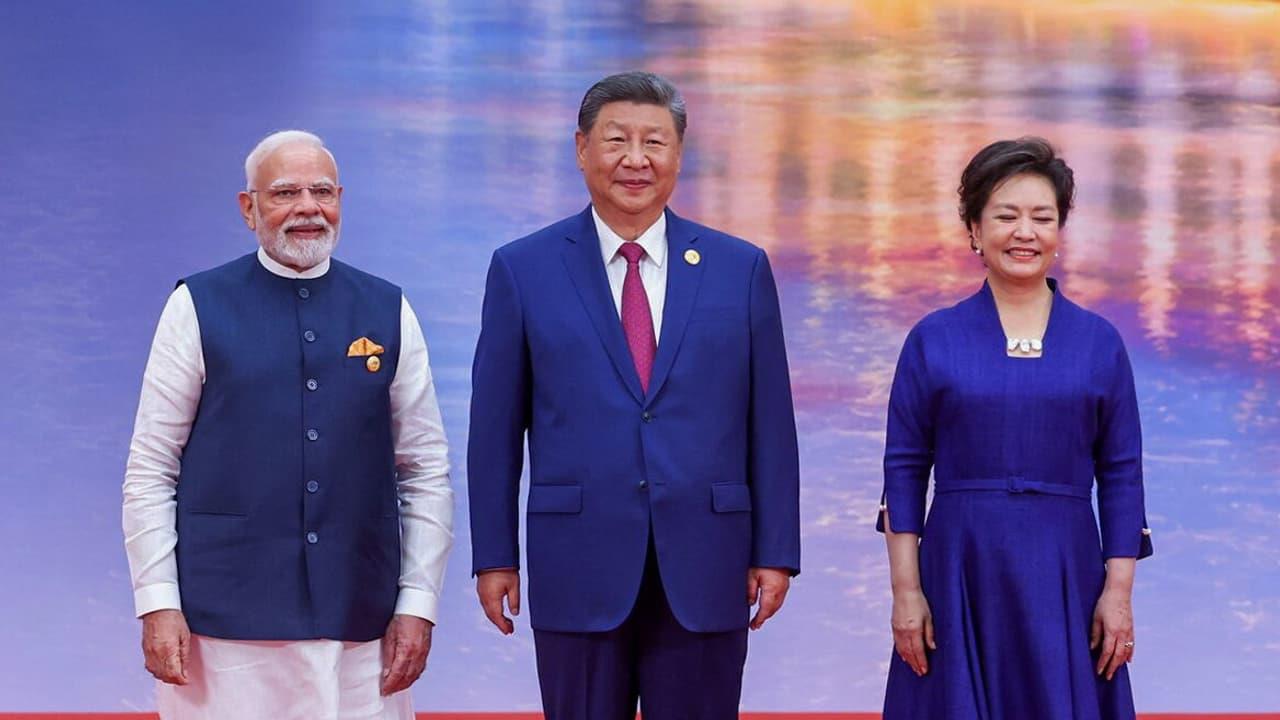
What Is Beijing's View On Narendra Modi's Visit To China And What It Means For Sino-Indian Ties Reset?
On August 31, Prime Minister Narendra Modi held meetings in Tianjin with Chinese President Xi Jinping and Cai Qi, secretary of the Communist Party's Central Secretariat. For Beijing, the talks marked an important moment in what Xi described as a“new journey” for Sino-Indian ties, a phrase that highlighted the shift from confrontation toward cautious cooperation.
Xi Jinping stressed that India and China should remain“amicable neighbors and mutually enabling partners,” envisioning what he called a“dance of the dragon and the elephant.” Prime Minister Modi echoed the tone of optimism, remarking that bilateral relations were“returning to a positive trajectory.”
He pointed to recent improvements such as stability along the border, preparations to resume direct flights, and the sense that consensus outweighed differences. Both leaders also emphasized enhanced coordination in multilateral forums, suggesting that their dialogue extended beyond bilateral concerns to wider strategic arenas.
BREAKING: Modi pulls Putin and Xi together, locking hands in a show of unity at China's SCO summit twitter/fTeRy5tSid
- RT (@RT_com) September 1, 2025
Resetting Ties After Years of Strain
Chinese scholar Lin Minwang compared the India-China relationship to a fruit tree full of“low-hanging fruits.” His metaphor pointed to immediate opportunities that could deliver results without tackling the most difficult disputes. At Tianjin, Modi and Xi endorsed the principle that the“boundary question should not define the overall relationship.” That political premise was presented as the key to moving ties forward.
The current engagement follows the first Narendra Modi-Xi Jinping formal meeting in five years, held on the sidelines of the BRICS Summit in Kazan in 2024. Since then, there have been gradual troop withdrawals at select points along the disputed border areas and an expansion of communication channels between militaries and foreign ministries. The intent has been to prevent border tensions from spilling into other areas of cooperation.
In mid-August 2025, the 24th Round of the Special Representatives' Meeting on the Boundary Question produced a 10-point consensus. This included creating new expert groups under the Working Mechanism for Consultation and Coordination on India-China Border Affairs. Their task is to push forward negotiations where possible and reinforce mechanisms for day-to-day management of sensitive zones.
Economic Pragmatism Driving Renewed Cooperation
In Tianjin, the agenda went beyond political issues. Xi and Modi emphasized trade, rare earths, and high-technology supply chains. India's manufacturing and renewable energy sectors continue to depend heavily on Chinese components and materials, while China views India's consumer market as too large to ignore. This convergence of economic needs, offers what both sides see as a stabilizing factor in relations, even when political trust is incomplete.
Practical steps are already in motion that include resuming direct flights, boosting business-to-business exchanges, negotiating sector-specific memoranda of understanding, and reopening cultural and religious pilgrimages. Beijing sees these moves as a way to convert political goodwill into visible economic and societal benefits.
But questions remain about the depth of this apparent reset. Is it a durable change or merely a tactical response to global conditions? Chinese commentators suggest both readings may be correct.
Chinese state media described Narendra Modi's return to China after seven years as a“critical window” for restarting and relaunching ties. Xinhua reported that the Tianjin meeting was a continuation of the consensus reached in Kazan and that both governments had“continued to make new progress.” Officially, Beijing framed the visit as a step toward“sustained, sound, and stable development.”
Zhang Shujian, a researcher at the China Institutes of Contemporary International Relations, called it“a fresh opportunity for positive interaction” and a chance to implement the August consensus on the boundary question through practical cooperation.
Still, China remains cautious. For Beijing, India's pragmatism is welcome but fragile. As Fudan University's Xie Chao observed, India continues to juggle between pragmatists and hardliners at home while maintaining a strategy of balancing diplomacy abroad. The result, he argued, is that India's opportunistic impulses remain visible.
Chinese media also noted Modi's remarks with Japan shortly before traveling to China, where he indirectly referenced maritime activities linked to Beijing. Outlets such as The Paper saw this as evidence that India's fundamental suspicions of China continue. The view in Beijing is that while the Tianjin meetings may mark progress, they should not be mistaken for a complete strategic reorientation.
Legal Disclaimer:
MENAFN provides the
information “as is” without warranty of any kind. We do not accept
any responsibility or liability for the accuracy, content, images,
videos, licenses, completeness, legality, or reliability of the information
contained in this article. If you have any complaints or copyright
issues related to this article, kindly contact the provider above.


















Comments
No comment